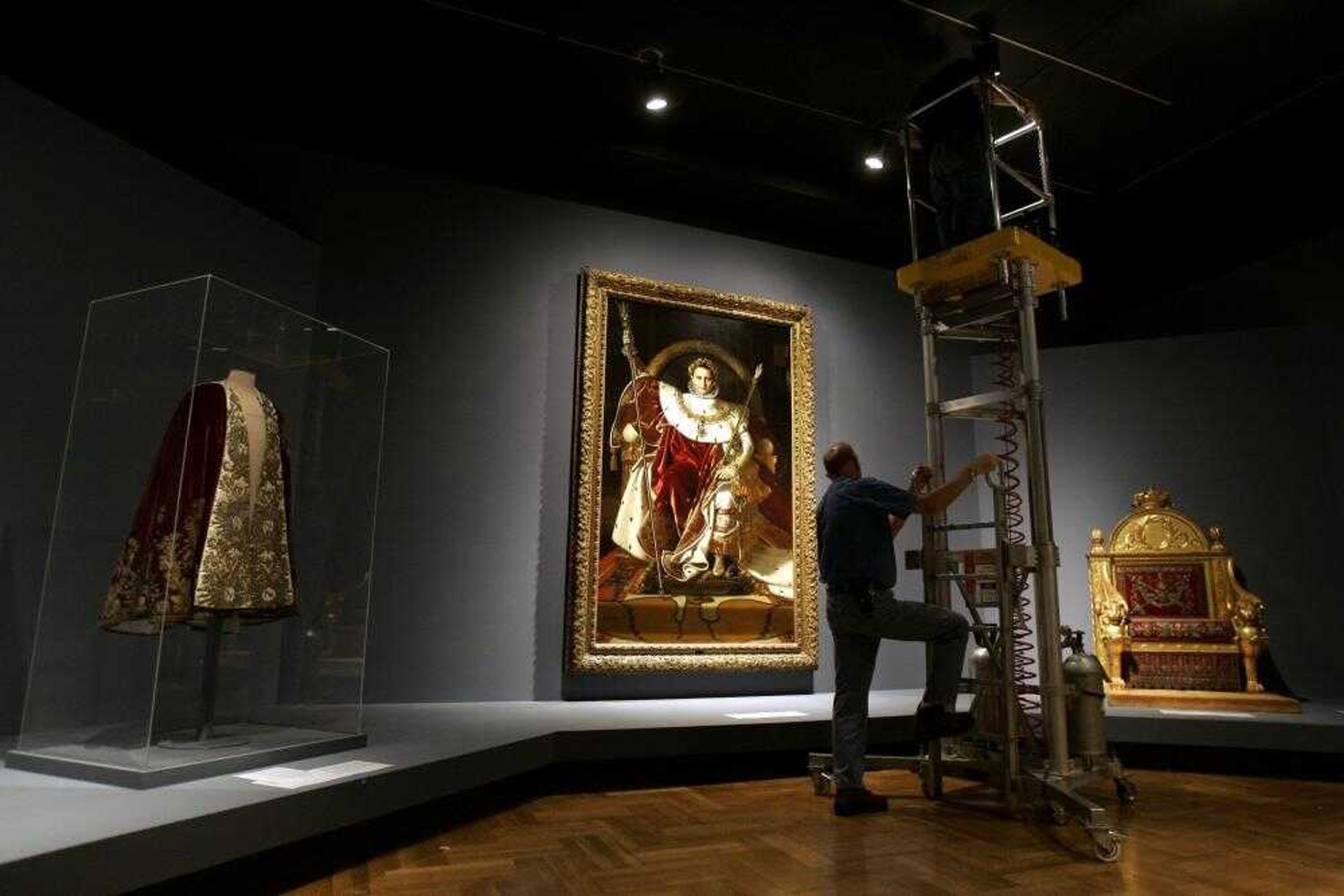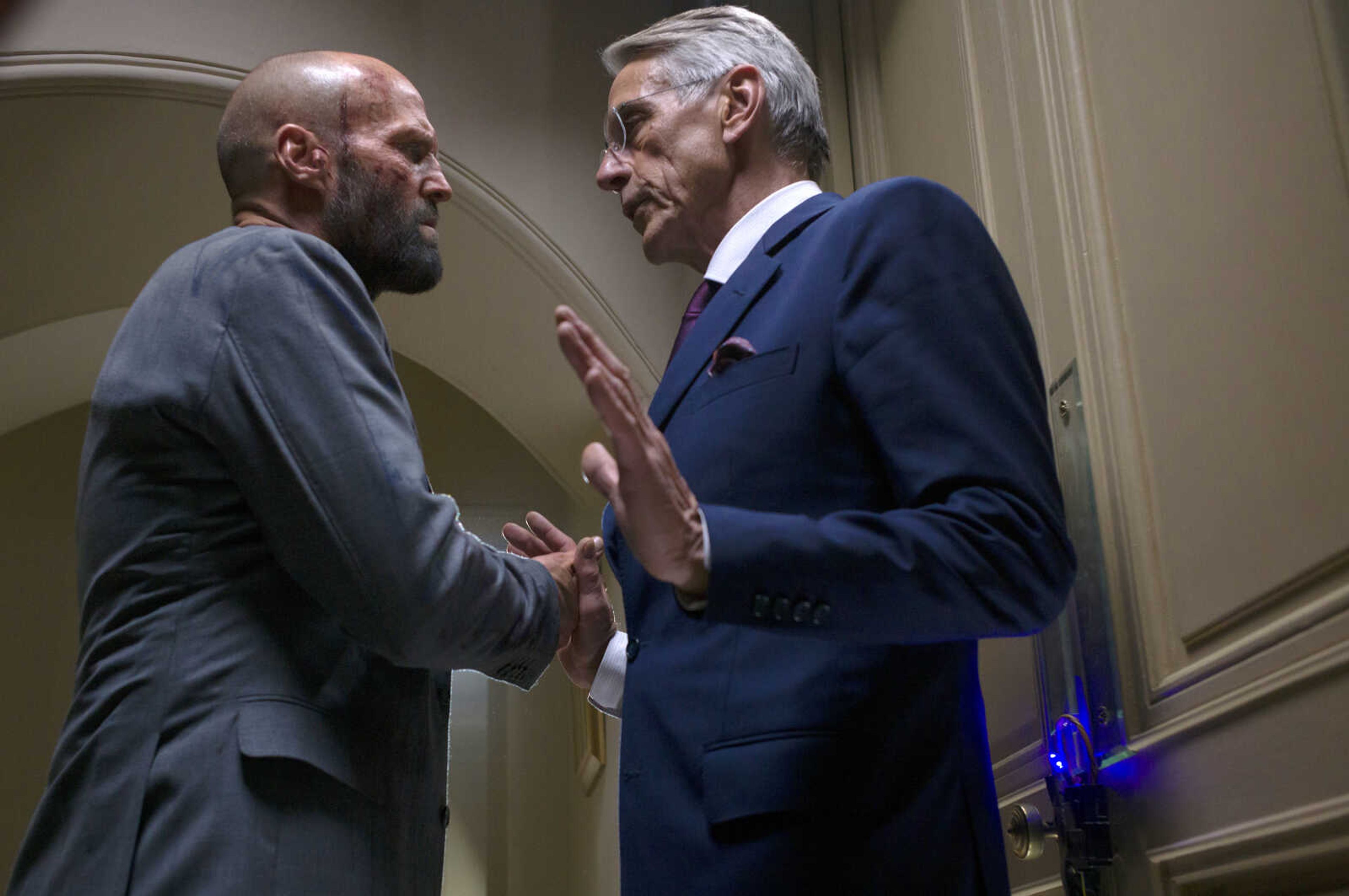Show focuses on the polish, power of Napoleon's reign
ST. LOUIS -- We live in an image-conscious time, bombarded with details about the rich and famous: who is wearing what, how they decorate their homes, the ways they amass and keep their power. But a new show about Napoleon Bonaparte at the Saint Louis Art Museum shows that these fascinations weren't just invented...
ST. LOUIS -- We live in an image-conscious time, bombarded with details about the rich and famous: who is wearing what, how they decorate their homes, the ways they amass and keep their power.
But a new show about Napoleon Bonaparte at the Saint Louis Art Museum shows that these fascinations weren't just invented.
"Symbols of Power: Napoleon and the Art of the Empire Style, 1800-1815" brings together more than 140 works, from furniture to paintings to jewelry, to examine the decorative arts of the time.
The show aims not to just showcase the beautiful things from the rule of Bonaparte, the military general whose rise to power led him to become emperor of France from 1804 to 1815, including a period of exile. It examines decorative choices of the time, symbols chosen to legitimize the ruler and convey firm messages of his strength.
The exhibit "shows the gradual development of the Empire style from the extreme simplicity of works made after the Revolution through to the end of his reign with this extraordinary luxury," noted David Conradsen, assistant curator of decorative arts and design at the St. Louis museum.
The Empire style drew heavily from emblems related to ancient Rome, Greece and Egypt.
"I think our goal was to invite the public to understand what they see. All these little images, all these little ornaments for each item can be read and understood like a language and make sense," said Odile Nouvel-Kammerer, chief curator for 19th-century art at the Musee des Arts Decoratifs in Paris.
Napoleon knew the importance of such choices. His state councilors got into discussions about which creature best expressed the new regime -- the eagle, the lion, the elephant or the rooster. Twice the vote was for the rooster. Napoleon objected, calling it "nothing but poultry. The animal is too weak."
He first wanted a lion, but then selected the eagle. A contributor to the exhibit's catalog, Jean-Pierre Samoyault, says it's impossible to know exactly why Napoleon changed his mind, but notes: "Was not the eagle the main attribute of the most powerful god of ancient Greece and Rome, Zeus-Jupiter? Was it not also the symbol of the two most famous empires in history, the Roman Empire and that of Charlemagne?"
Napoleon's regime is also associated with the bee.
When planning the cloak for Napoleon to wear at his coronation, some of his advisers said bees used to be on the French coat of arms. They argued that the fleurs-de-lis that came later were merely bees, poorly drawn. "This argument was accepted, and the bees were adopted," Samoyault wrote.
Napoleon had two embroidered purple robes decorated with bees, one for his 1804 coronation and one for his second marriage to the archduchess Marie-Louise in 1810.
The public can get an up-close look at the splendor, Conradsen said, standing before Napoleon's coronation cloak, pointing out the intricate details.
"This is one of those objects that may never travel again. It's so fragile," he said.
"Symbols of Power" will be on display through Sept. 16 at the Saint Louis Art Museum. It will run at the Museum of Fine Arts in Boston from Oct. 21 through Jan. 27.
It will then move to the Musee des Arts Decoratifs in Paris from April 2, 2008 through Oct. 5, 2008. The American Federation of Arts and Les Arts Decoratifs collaborated on the show.
To embroider the robe, individual wires of gold or silver were wrapped around silk threads and then each used to stitch the intricate, shimmering details. "It's just extraordinary, a tour de force," Conradsen said.
The museum officials said Napoleon appreciated the finer things, and knew that in supporting them he would promote quality in French industry, but pointed out he was a military man at his core.
"He adopted luxurious images, gold and so on, but it was not for himself, it was really for political reasons," Nouvel said.
The show includes both a massive, red velvet throne with gold ornamentation made for Napoleon to sit on during gatherings of the Legislative Body and the austere, folding steel bed frame he favored during his military campaigns -- and, surprisingly, for his own small bedroom at Fontainebleau.
But he and those around him knew the choices they made were watched, as evidenced by the diary of a woman who spotted Napoleon's first wife, Empress Josephine, leaving a palace and recording the details of her garments, down to the purple camel-hair shawl over her shoulders.
As they strolled through galleries of opulent textiles, furniture and china, the museum officials speculated that the show might be perceived differently in France than in the United States. What may seem like a history and art lesson in St. Louis will likely have more emotional resonance in Paris.
Nouvel-Kammerer said in France, it's been difficult to present a large show about Napoleon, whose time in power and legacy is complex. He is remembered as a dictator, but one who brought order to France. A winner, but someone responsible for "terrific disasters in all Europe."
"You love him, and it's also so difficult," she said.
Connect with the Southeast Missourian Newsroom:
For corrections to this story or other insights for the editor, click here. To submit a letter to the editor, click here. To learn about the Southeast Missourian’s AI Policy, click here.









